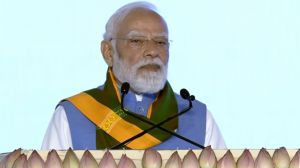Opening doors to foreign financial firms
Should India allow foreign service providers greater access to its financial market? And what steps must regulators take before throwing the country wide open?

Of late, the Indian financial market has elicited growing interest from global financial service providers, the latest entrant being Wizard Home Loans, a GE Money company. Even though the rate of credit growth in the home loan segment has declined during the past year, Wizard is optimistic about the prospects of the Indian market. “People here are talking of the market coming down from its earlier growth rate of 35-40 per cent but in reality it’s still growing at a phenomenal rate. Any other country would be more than happy with just a double-digit growth rate,” said Wizard India CEO Egisto Franceschi. “There is a lot of energy in the market.”
Case for opening up
While foreign financial service providers may be upbeat about the Indian market, does India need them? To this, PricewaterhouseCoopers executive director Ashwani Puri answers with an unequivocal yes. “Financial services essentially help in mobilisation and allocation of financial resources. A rapidly growing economy like India’s has large funding requirements.
“If Indian business is to grow and become competitive, it will need a huge amount of capital at competitive costs,” he adds. “Allowing access to foreign financial service providers will result in increased competition and, hence, more efficiency. It will also bring down the current high spreads between deposit and lending rates.”
Besides increased efficiency, another argument made in favour of allowing foreign players access to the Indian market is financial inclusion. Less than half of Indian households have a bank account. Assets under management by mutual funds (MFs) amount to a mere 12 per cent of bank deposits and less than 2 per cent of domestic savings. And less than 8 per cent of the population has life insurance.
Puri adds, “The increased presence of foreign financial service providers is expected to improve access to financial services in currently under-serviced segments such as the rural economy, as well as the small, medium and micro businesses.”
According to Invest India Economic Foundation (IIEF) director Gautam Bhardwaj, the role of international financial institutions will be critical for the evolution of the Indian financial market. “Their role will be more on the advisory, service delivery fronts and in ushering better practices. They will also bring in better technology and better distribution.”
The opportunities
What opportunities do foreign financial service providers see in India? Over the past few years, the Indian economy has been growing at around 9 per cent per annum. Rising incomes, a sizeable and rapidly growing middle class, and a demography tilted heavily in favour of the young are all factors that make the market attractive.
While the market has high potential, it is still under-developed. Domestic bank credit, currently at around 60 per cent of GDP, is expected to increase to over 100 per cent of GDP over the next 20 years, in line with trends witnessed in other economies.
PricewaterhouseCoopers estimates that domestic credit in India will grow from the current level of approximately $0.5 trillion to $23 trillion by 2050. At around 30 per cent, consumer credit as a proportion of GDP is low in India compared to other Asian markets (consumer credit to GDP ratios in Singapore, Taiwan and Malaysia exceed 100 per cent).
Further, the return on banking assets is currently around 1.3 per cent, which is similar to the returns in other emerging economies (except China), but is significantly higher than the global average of around 1 per cent. “It is this combination of high growth and high returns that makes the Indian banking sector one of the most attractive in the world,” points out Puri.
Similarly, in insurance, at $22.70 (2005 figure), the insurance premium per capita in India is less than half the figure in China and less than a fifth of that in Russia and Brazil. In investment management/ private banking, assets under management of the mutual fund industry reached $68 billion in August 2006, a year-on-year rise of more than 50 per cent. This, however, accounted for only around 12 per cent of the total bank deposits.
Current restriction
At present, foreign financial service providers operate under several restrictions. In banking, foreign banks cannot open more than 12 branches in a year. In insurance, the current policy restricts foreign holdings to 26 per cent. The Government has announced its intention of increasing this ceiling to 49 per cent but the necessary legislative changes are yet to be brought about.
2009: Landmark year
In April 2005, the RBI had indicated that restrictions on the entry and operation of foreign banks in India would continue till April 2009. This deadline was set mainly to allow domestic banks, both public and private sector, to gear themselves up to face the heightened competition post-2009. Hence, after this date, foreign banks are expected to enjoy free entry as well as greater operational flexibility.
Full convertibility
Another measure that will help integrate the Indian financial market more closely with the global market is full convertibility of the rupee. Though India avoided the financial dislocation seen by its neighbours during the East Asian crisis, the country’s regulators have been wary about moving towards full convertibility.
“The caution may be on account of the fact that India continues to have a large and growing trade deficit, partly due to a high and inelastic petroleum products payout. Despite high recent inflow of funds, the caution is probably also due to concern regarding India’s perceived inability to withstand a large shock in the event of a slowdown in the global economy, which may alter sentiment significantly,” explains Puri.
However, with its foreign exchange reserves growing comfortable, one can expect full convertibility in two to three years, provided inflation remains low and the economy continues to grow at its present rate.
Finally, before allowing foreign financial players greater access to the Indian market, the regulatory framework within the country will need to be strengthened. As Bhardwaj of IIEF says, “In future, financial services are going to get more complex. Different segments of the financial market are at varying stages of evolution and will require better regulation. Indian regulators will have to imbibe practices from global regulators.”
An emerging financial hub
• Allowing access to foreign financial service providers will result in increased competition and greater efficiency
• It is expected to make more capital available to Indian business at competitive costs
• n Foreign players find the Indian market attractive because of the magnitude of opportunities and high returns
• After April 2009, many of the restrictions on foreign players in banking are expected to end
• India needs to beef up its regulatory framework


- 01
- 02
- 03
- 04
- 05





























